#milfoils
Text
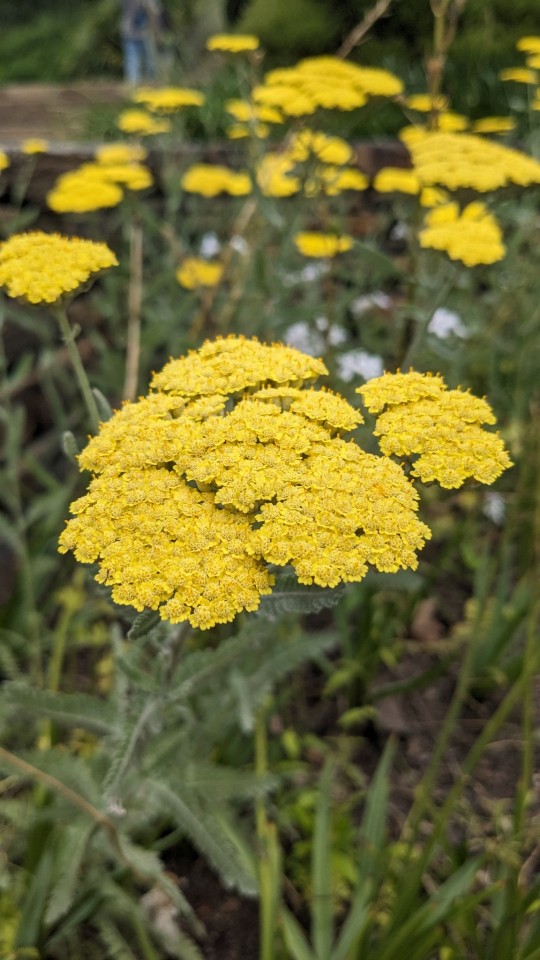
Achillea filipendula / Fernleaf Yarrow at the Sarah P. Duke Gardens at Duke University in Durham, NC
#Achillea filipendula#Achillea#Asteraceae#Fernleaf Yarrow#Yarrow#Milfoil#Nosebleed#Nature photography#photography#photographers on tumblr#Sarah P. Duke Gardens#Duke Gardens#Duke University#Durham#Durham NC#North Carolina#🌺🌻#Plants#Flowers
4 notes
·
View notes
Text
Prefix: Yarrow-
A white cat.

Description: common yarrow, also known as milfoil, is an herb in the daisy family that grows in much of the Northern Hemisphere. The fernlike leaves grow in spirals along the stems with larger leaves near the base of the plant and smaller leaves near the apex. It blooms from spring to autumn, and the clustered inflorescences are composed of white or, rarely, pink ray and disc flowers. Yarrow tends to grow in dry, disturbed, and sunny habitats such as cliffs, fields, and roadsides, and its flowers often attract pollinators such as bees, butterflies, hoverflies and wasps. Compounds in common yarrow can be poisonous to cats and cause diarrhea, vomiting, and other health issues.
Synonyms: Milfoil- can be used as an alternative to Yarrow-.
1 note
·
View note
Text
Looking for 7 Creepy Tales of Candlewood Lake as featured on Ethan & Lou?
This map marks the tales’ (approximate) locations.
Did you hear about the tales of Candlewood Lake on I-95’s Ethan & Lou Show today (Halloween?) Here’s where you can go read them all: http://nehw.blogspot.com/2016/08/legends-of-candlewood-lake-guest-blog.html
If you grew up on or near the lake, do you remember any of these? I asked a few people when I was working on this and found out that yes,…

View On WordPress
#Chicken Rock accidents#Down the Hatch Brookfield#drowning deaths milfoil#Kristi Petersen Schoonover#lake monsters of the United States#legends of Candlewood Lake CT#Lynn Deming#New England Horror Writers#scary stories about lakes#the story of the Witch’s Circle#town of Jerusalem CT#towns buried under Candlewood Lake#urban legends
0 notes
Video
n8_w1150 by Biodiversity Heritage Library
Via Flickr:
D. Io. Hieron. Kniphofii pathol. et prax. in Acad. Erfurt. prof. publ. ordin. facult. med. senior. et adsess. primar., Acad. Caesar. nat. curiosor adiuncti, et bibliothecarii Botanica in originali, seu, Herbarium vivum : Halae Magdeburgicae :Opera et studio Ioannis Godofredi Trampe, typographi halensis,MDCCLVIII-MDCCLXIV [1758-1764]. biodiversitylibrary.org/page/60734182
#Botany#Early works to 1800#Identification#Nature prints#Pictorial works#Plant prints#Plants#Specimens#Harvard University Botany Libraries#bhl:page=60734182#dc:identifier=https://biodiversitylibrary.org/page/60734182#flickr#achillea millefolium#yarrow#common yarrow#old man's pepper#devil's nettle#sanguinary#milfoil#soldier's woundwort#thousand seal#botanical illustration#scientific illustration
1 note
·
View note
Text
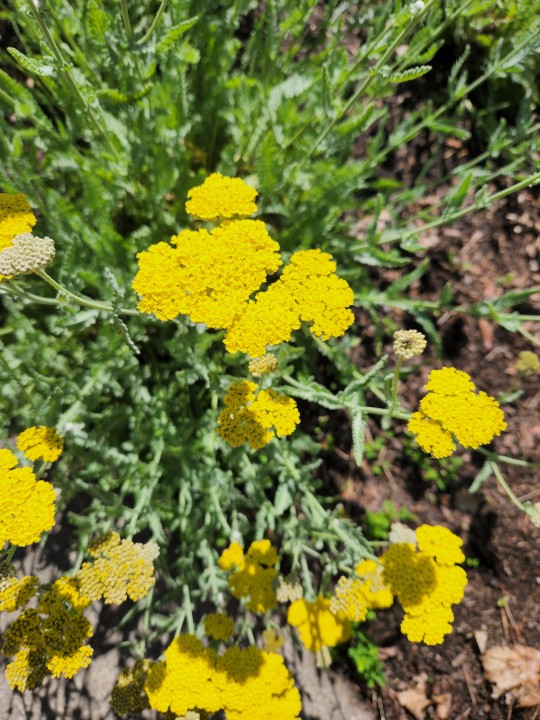
Compositae Achillea tomentosa
Yellow Milfoil
Identification via Pl@ntNet
#daily plant#weed#flower#yellow milfoil#acnh's summer weeds include these!#as well as some redstem storksbills#i was so excited when I recognized them
0 notes
Text
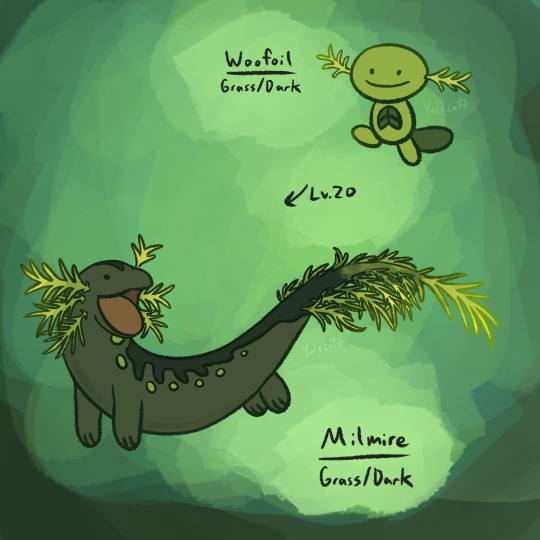
wooper regional variant and evo, based on milfoil and invasive mudpuppies
157 notes
·
View notes
Text
Yarrow
Achillea millefolium
Known as: Allheal, angel flower, arrowroot, bloodwort, cammok, carpenter's weed, death flower, devil's mustard, Devil's nettle, eerie, field hops, gearwe, green arrow, herbe militaris, hundred leaved grass, knight's milfoil, noble yarrow, nosebleed plant, plumajilo, seven year's love, snake's grass, soldiers thousand seal., squirrel tail, stanch grass, tansy, thousand-leaf, thousand weed, woundwort, yarrowway & yerw
Related plants: Is a member of the daisy family Asteraceae that consists of over 32,000 known species of flowering plants in over 1,900 genera within it such as chamomile, coneflowers, dahlia, daisy, dandelion, goldenrod, lettuce, marigold, mugwort & sunflower
Parts used: Leaves & flowers
Habitat and Cultivation: This hardy plant is native to temperate regions of the Northern Hemisphere in Asia, Europe & North America
Plant type: Perennial
Region: 3-9
Harvest: Harvest yarrow when the blooms only when they have fully opened. It should be cut right above the leaf node to encourage the plant to potentially flower again. Many choose to harvest the flowers in the late morning when the dew has dried before so that the plant is not stressed by the extreme heat. Hot, dry spells right before bloom seems to be ideal for producing the most fragrant leaves.
Growing tips: Plant in an area that receives full sun to encourage compact growth and many flowers about 1-2 feet apart. In partial sun or shade, yarrow tends to grow leggy. Yarrow performs best in well-drained soil. It thrives in hot, dry conditions; it will not tolerate constantly wet soil. Loamy soil is recommended, but yarrow can also be grown in clay soil as long as it does not always stay saturated with water. While this plant is technically considered invasive only in noncultivated settings, common yarrow still needs to be planted in an area where you don't mind proliferation.
Medicinal information: Yarrow has a history of being used for fever, common cold, hay fever, absence of menstruation, dysentery, diarrhea, loss of appetite, gastrointestinal (GI) tract discomfort, and to induce sweating. Some people chew the fresh leaves to relieve toothache. Yarrow is applied to the skin to stop bleeding from hemorrhoids; for wounds; and as a sitz bath for painful, lower pelvic, cramp-like conditions in women. Some people chew the fresh leaves to relieve toothache.
Cautions: Yarrow is commonly consumed in foods, but yarrow products that contain a chemical called thujone might not be safe because it is poisonous in large doses. Yarrow is not recommended for use during pregnancy or chestfeeding as it causes risks of miscarriage. Yarrow might slow blood clotting. In theory, taking yarrow might increase the risk of bleeding in people with bleeding disorders. In some people, it also might cause skin irritation & is toxic to cats & dogs.
Magickal properties
Gender: Feminine
Planet: Venus
Element: Air & Water
Deities: Achilles, Aphrodite, Cernunnos, Faeries, Oshun & Yemaya
Magickal uses:
• Add the flowers to a satchet or dream pillow to encourage prophetic dreams
• Hang a bundle above your bed on your honeymoon night to ensure lasting love for 7 years
• Place across your thresholds or plant near doorwaysto prevent negative energies & influences from entering your home
• Burn as an incense before or during divination to increase psychic abilities
• Wear as an amulet to attract love, friendships & give courage
• Place yarrow under your pillow & if you dreamt of your love, it was a positive omen. If you had a bad dream, or dreamt of other people, it wasn’t
• Combine with mugwort as tea to drink before divination to increase psychic powers
• Put near yourself while practicing divination to increase your psychic abilities
• In spells, use to re-establish contact with long-lost friends or relatives & attract their attention
• Braid into your hair to tap into inner wisdom
• The I-Ching divination was originally performed with dried yarrow stems
• Wash crystals& crystal balls with a yarrow rinse to bring about clarity of vision
• Drink yarrow tea & a cinnamon stick to release hidden truths
• Place on a coffin or grave to help the spirit cross over/ let go
•For powerful protection, pick yarrow flowers and charge them in the sun. Once charged, take the flowers and sprinkle them outside your home to prevent negative influences and energies away from entering your home
Sources:
Farmersalmanac .com
Llewellyn's Complete Book of Correspondences by Sandra Kines
Wikipedia
A Witch's Book of Correspondences by Viktorija Briggs
The Encyclopedia of Natural Magic by John Michael Greer
Wild Witchcraft by Rebecca Beyer
Plant Witchery by Juliet Diaz
A Compendium of Herbal Magick by Paul Beyerl
The Herbal Alchemist Handbook by Karen Harrison
The Book of Flower Spells by Cheralyn Darcey

#yarrow#herb of the week#magical herbs#herbalism#witchblr#wiccablr#paganblr#witch community#witches of tumblr#tumblr witch community#tumblr witches#grimoire#spellbook#book of shadows#witch#witchcraft#witchcore#spells#spellwork#beginner witch#baby witch#witch tips#witch tumblr#beginner witch tips#witchy things#pagan#wicca#witch friends#green witchery#GreenWitchcrafts
82 notes
·
View notes
Text
Everything You Need to Know About Herbs: Yarrow
Yarrow (Achillea millefolium)
*Poisonous *Medical *Feminine
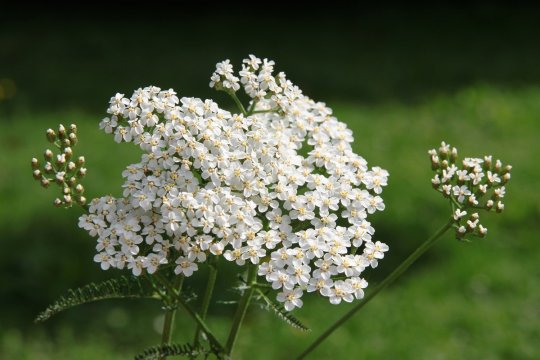
Folk Names: Achillea, Bad Man’s Plaything, Carpenter’s Weed, Death Flower, Devil’s Nettle, Eerie, Field Hops, Gearwe, Hundred Leaved Grass, Knight’s Milfoil, Knyghten, Lady’s Mantle, Milfoil, Militaris, Military Herb, Millefolium, Noble Yarrow, Nosebleed, Old Man’s Mustard, Old Man’s Pepper, Sanguinary, Seven Year’s Love, Snake’s Grass, Soldier’s Woundwort, Yarroway, Yerw
Planet: Venus, Sun
Element: Water, Air
Deities: Cernunnos, Hernes, Pan
Abilities: Courage, Love, Psychic Powers, Exorcism, Clarity, and Healing
Why Poisonous?: Contain thujone (just like Wormwood) Thujone is a chemical compound in yarrow that excites the nervous system. Causes seizures, hallucinations and other adverse reactions.
Characteristics: Has white flowers that bloom atop straight stalks with grayish-green serrated leaves that have a feather like appearance. Is a perennial plant that can grow to 3 feet.
History: Is native to Northern and Western Europe. Is famed as the wonder healer. Was used by Achilles to heal wounds, hence it’s botanical name. It is also known as nosebleed because the leaves were used to staunch blood. It was used in tea by the Native Americans for the treatment of menorrhea, the blood flow of menstruation. In the traditional Yi Jing age, the dried stalks were thrown into water to predict the future.
Growing Yarrow:
Easy to Grow? Yes
Rating: Beginner Friendly
Are the seed accessible? No
How to Grow Yarrow
Video Reference
Where to Buy Seeds
Magical Usage:
Placing the herb on top of graves help the dead peacefully crossover
Weaved into braids creates an energy web that taps into your inner wisdom
Helps develop psychic gifts
A cup of yarrow tea with a cinnamon stick can warm your bones and release hidden truths about oneself
Can be used for divination of the future and relationships
If worn on person, can stop fear and grant courage
Can be hung as a wedding decoration to guarantee seven years of a loveable marriage
Washing hair with water infused with yarrow can prevent baldness
Carrying it around can attract love, friendships, and distant connections
Exorcises evil and negativity from a person, place or thing
Medical Usage:
Clean and heal wounds
Can reduce fever
Stop internal bleeding
Lower blood pressure
Helps with menstrual issues such as: heavy bleeding, period pain, and heavy flow
In tonic form, can help with colds, flu, hay fever, weak digestion, and improve blood circulation
Sources
#witchcraft#witch community#witchblr#green witch#herbalist#medicinal herbs#occulltism#plants and herbs#nature#paganblr#witch garden#gardening#plantblr#yarrow#botany#witchcraft 101#witches#healing#witch tips#witches of tumblr#witchcraft resources#witch blog#beginner witch#herbalism
77 notes
·
View notes
Text
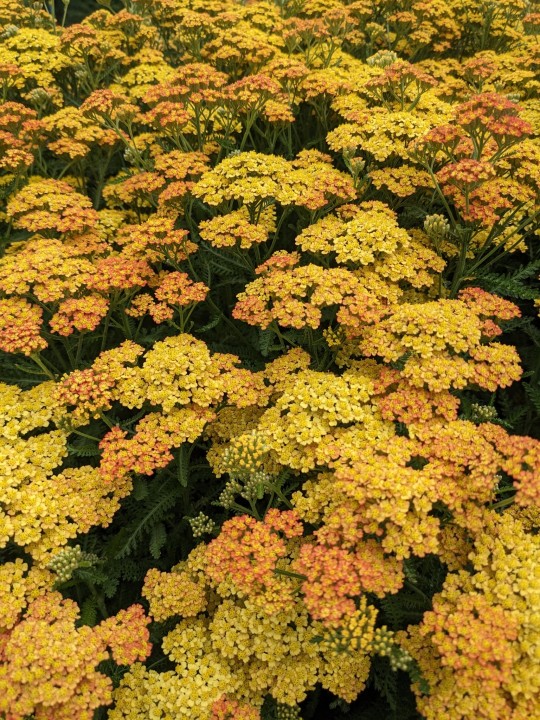
Achillea millefolium 'Milly Rock Yellow Terracotta Improved' / 'Milly Rock Yellow Terracotta Improved' Yarrow at the JC Raulston Arboretum at North Carolina State University in Raleigh, NC
#Achillea millefolium 'Milly Rock Yellow Terracotta Improved'#Achillea millefolium#Milly Rock Yellow Terracotta Improved Yarrow#Yarrow#Milfoil#Old man's pepper#Sanguinary#Soldier's woundwort#Thousand seal#Nature photography#Jc raulston arboretum#North Carolina State University#Ncsu#Raleigh#North Carolina
1 note
·
View note
Text
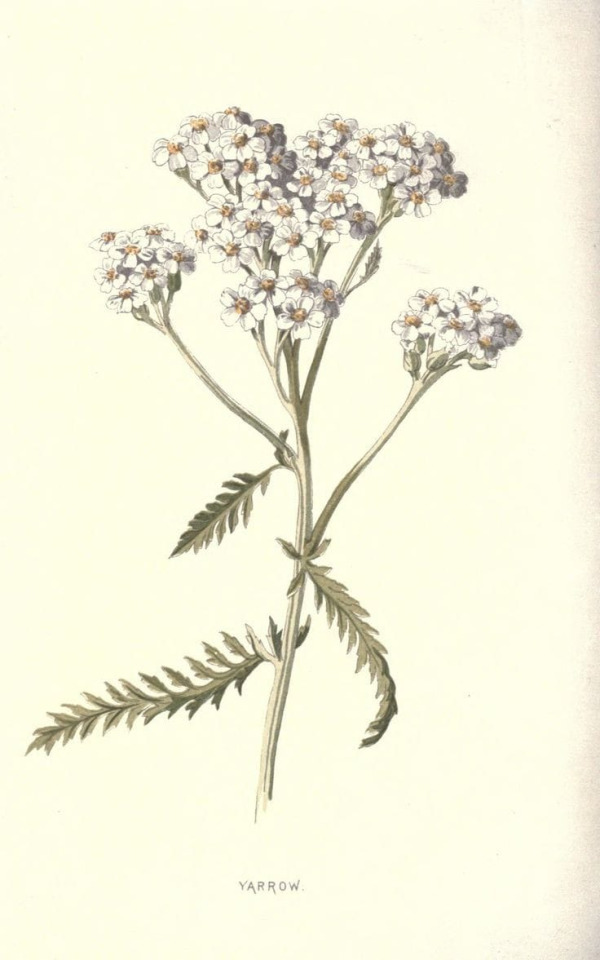
Witchy Herbs: Yarrow (Achillea millefolium)
This is also called devil's nettle, milfoil, seven years love, or bloodwort. It has feminine energies, connects with the element of water, and is ruled in the planet Venus. It honors Aphrodite, Hermes, and the Horned God. Zodiac sign; Aries. Crystals; Clear quartz, tigers eye, lapis lazuli.
It is a common herb you can find in most gardens. Its foliage has a silvery quality that is rather attractive. The stem and leaves of this plant are usually harvested in the latter part of summer and used in poultices and ointments to help staunch blood flow from wounds.
Hence for its Latin namesake. Achillea millefolium. According to the Greek myth, Yarrow gave the hero, Achilles, its protective powers to make him invincible wherever the herbal bath had penetrated his skin, and in turn, Achilles healed his wounded soldiers with Yarrow.
Growing yarrow in your witchy garden is always an excellent idea. Not only will you attract bees and have a steady supply of medicine, its very presence helps out all the other herbs around it. It increases the other herbs’ essential oil content as well as their growth and health in general.
Fights infections, break fevers, eases common cold symptoms, aids digestion, and easing painful menstruation or used in sitz baths for post labor. Recent studies are looking into how Yarrow can help with depression and anxiety as a tincture.
You can use this for spells involving love, healing, protection, courage, exorcism, and psychic powers.
Fun Folk Fact - When used in love spells, it is said that it will only empower that love for 7 years, the rest will be up to the couple to make it or break it.
• It is an attracting herb. If kept near, it will attract love, friends, people from the past, or to gain attention. If you think of them, they will come.
• You can make a tea with this herb to enhance your psychic abilities and enjoy during divination.
• Growing it near will also expel evil from any place, person, or thing.
• Use yarrow to set magical boundaries.
• Place yarrow over doorways to protect from negative energies. For powerful protection, pick yarrow flowers and charge them in the sun. Once charged, take the flowers and sprinkle them outside all the way around your home. This will keep any negative influences and energies away from your home.
• Wash down a room or Ouija board with yarrow to attract friendly spirits.
• Wash crystals and crystal balls with a yarrow rinse to bring about clarity of vision.
• Yarrow has weak romantic properties making it the perfect courting ingredient when you just want to get to know someone before getting serious.
#witchy herbs#herbalism#herbal medicine#yarrow#protection#rituals#spells#psychic abilities#divination#psychic#crystals#witch#witchy#witchy vibes#witch aesthetic#witchcraft#witchythings#pagan
26 notes
·
View notes
Text


✧・゚: *✧・゚:* 🦇 Lilia Birthday SSR flower analysis* 🦇*:・゚✧*:・゚✧
*Mandatory reminder that I’m no flower specialist, which means these are all very subjective opinions. Take everything with a grain of salt!
Lilia has spider chrysanthemums. They’re popular wedding flowers since they represent liveliness (in white also truth and purity.) However, chrysanthemums in all variations are funeral flowers and symbolize peace and death and are used to express sympathy. In China however they can stand for peace, health, and old age. Since their other name is ‘spider mom’ they’re also a symbol of a long and happy life! In Greek mythology they’re protectors against evil spirits (and thus once again flowers commonly found at graveyards) which bring bad luck and nightmares to those who pluck them. (I know some ppl wanted it to be the spider lily or as it is sometimes called ‘japanese death flower’ since it’s often depicted in anime but if you google spider lily I feel like it doesn’t quite look right for what Lilia has in his bouquet. Spider chrysanthemums, at least in my opinion, are a better match.)
One of the pink type of flowers in his bouquet are begonias. They’re a universal symbol of love, affection, desire, gladness, and pleasure, as well as gratitude, peace and harmony. They can also represent misfortune or impending bad luck. Since they’re regarded as one of the most beautiful flowers they usually carry positive meanings though and are commonly gifted on birthdays, for Mother’s Day, or as a thank you.
The other pink flowers are peonies, which symbolize prosperity, good fortune, happiness, honor, and compassion. In China they’re regarded as the ‘king of the flowers’, being a symbol of friendship and beauty. In Japan they’re associated with honor, masculinity, and wealth.
The white ones look like baby’s breath, which represent love, appreciation, and admiration, as well as innocence, purity, and everlasting love. It’s a popular flower for wedding bouquets, but also as a gift for baby showers and generally a flower you’d give to new parents. On the other hand, they could be yarrows, which are a symbol of braveness, courageousness, and steadfastness of love. It's also known as ‘soldier’s wound wart’ and ‘knight’s milfoil’ since wearing the blossoms supposedly brings safety and bravery.
One of the green flowers (the slightly paler, long stretched one) is a gladiolus. Gladioli represent strength of character, faithfulness, moral integrity and remembrance, as well as a spirit that doesn’t give up.
The other green flower are hellebore. They symbolize peace, serenity and tranquility, as well as anxiety, stress and scandal. Green hellebore, more specifically, stand for youthfulness, rebirth, renewal, heath, prosperity, good fortune, and wealth. If you encounter a hellebore in your dreams, they’re a symbol of danger. Or they’re euphorbia (Albanian spurge) which represent purity, protection, and wisdom, and generally are a symbol of cheerfulness, family reunion, happiness and good luck, which is why they’re popular during Christmas time.
Naturally, these are only my un-educated guesses, but feel free to let me know if I got anything wrong/what flowers I might’ve missed.
94 notes
·
View notes
Text
I can identify the weeds in Animal Crossing now and it is strange.
0 notes
Text
Language of Flowers List
I cannot focus on game writing so I made this instead; send a char and a flower for a prompt, based on the lovely Language of Flowers (and this as extra)
Aloe: Affliction; Grief.
Apple: Temptation.
Aspen Tree: Lamentation.
Belladonna: Silence.
Bramble: Envy; Remorse.
Catchfly: False love.
Cedar Leaf: I Live For Thee.
Columbine, Red: Anxiousness.
Coreopsis, Arkansa: Love At First Sight
Cornbottle: Delicacy.
Cowslip, American: You Are My Divinity.
Cypress: Death.
Dead Leaves: Sadness.
Dittany of Crete: Birth.
Dittany of Crete, White: Passion.
Elder: Zealousness.
Fennel: Praise.
Fleur-De-Lis: I Burn.
Flowering Fern: Reverie.
Frog Ophrys: Disgust.
Garden Anemone: Forsaken.
Geranium, Dark: Melancholy.
Geranium, Lemon: Unexpected Meeting.
Gooseberry: Anticipation.
Grass: Submission.
Guelder Rose: Winter.
Helenium: Tears.
Heliotrope: Devotion.
Henbane: Imperfection.
Horse Chestnut: Luxury.
Hortensia: You Are Cold.
Hydrangea: Heartless.
Imperial Montague: Power.
Jasmine, Spanish: Sensuality.
Jasmine, Yellow: Elegance.
Judas Tree: Betrayal.
Lantana: Rigour.
Larch: Audacity.
Laurel: Glory.
Laurel, Ground: Perseverance.
Lichen: Solitude.
Lilac, White: Youthful Innocence.
Live Oak: Liberty.
Licorice, Wild: I Declare Against You.
Lobelia: Malevolence.
Lotus Flower: Estranged Love.
Lucern: Life.
Mandrake: Horror.
Milfoil: War.
Mint: Virtue.
Moss: Maternal Love.
Mourning Bride: I Have Lost All.
Mugwort: Happiness.
Myrtle: Love.
Night Convolvulus: Night.
Nightshade: Sorcery; Dark Thoughts.
Nightshade, Bitter: Truth.
Oats: Music.
Olive Branch: Peace.
Osmunda: Dreams.
Palm: Victory.
Periwinkle: Pleasures Of A Memory.
Pine, Black: Pity.
Pine, Spruce: Farewell.
Pomegranate: Foolishness.
Poplar, White: Time.
Poppy: Pleasure.
Poppy, White: Sleep.
Raspberry: Remorse.
Rudbeckia: Justice.
Sardony: Irony.
Snowball Tree: Age.
Sycamore: Curiosity.
Thrift: Sympathy.
Tuberose: Dangerous Pleasures.
Tulip, Yellow: Hopeless Love.
Venus' Looking Glass: Flattery.
Violet, White: Innocence.
Whin: Anger.
Willow, Water: Freedom.
Willow, Weeping: Mourning.
Wormwood: Absence.
#writing prompt#writing list#prompt list#literally doing anything but writing my game rn im suffering#slamming my head on the table#PLEASE let me get in the zone again im going insane#i have DEADLINESSSSS
98 notes
·
View notes
Text
I’m harvesting and drying my 100% organic, grown from seed Yarrow today. Let me know via DMs if you’d like some ☺️

Yarrow // Achillea millefolium
Parts Used: aerial portions, including flower and leaves.
Family: Asteraceae
Other Names: allheal, angel flower, bad man’s plaything, bloodwort, cammock, carpenter’s weed, devil’s mustard, devil’s nettle, devil’s plaything, dog daisy, gordaldo, gordoloba, green arrow, herbe militaris, hierba de las cortadura, knight’s milfoil, milfoil, nosebleed plant, old man’s mustard, old man’s pepper, sanguinary, soldier’s woundwort, squirrel’s taile, stanchgrass, staunchweed, thousand weed, thousand-leaf, thousand-seal, woundwort, yarroway
Native to Europe, Asia, and North America, yarrow is found in temperate regions all over the world.
Actions and Properties:
alterative, anti-fungal, anti-inflammatory, anti-pyretic, antiallergenic, antibacterial, antiseptic, antispasmodic, appetite stimulant, aromatic, astringent, bitter, carminative, circulatory stimulant, diaphoretic, digestant, diuretic, emmenagogue, expectorant, hemostatic, styptic, tonic, vulnerary
Constituents:
Yarrow is rich in essential oil and tannins. Yarrow contains 0.3% to 1.4% volatile oils (azulenes, eugenol, caaryophyllene, humulene, limonene, sabinene, thujone, borneol, and camphor), resin, sesquiterpene lactones, 3-4% tannins, flavonoids (including luteolin, apigenin, kaempferol, rutin, and quercitrin), alkaloids (achilletin, betonicine, stachydrine, trigonelline), alkamides, asparagin, aconitic and isovalerianic acids, selenium, beta-cerotene, proteins, sugars, phenolic acids, and coumarins. Its anti-inflammatory and anti-allergy effects may be associated with the constituent chamazulene. The alkaloid fraction of yarrow has shown evidence of hypotensive effects as well as antipyretic effects. Volatile oils in yarrow may have CNS depressent activity. The constituent Achilleine, an alkaloid, might decrease clotting time.
Yarrow is toxic to horses, dogs and cats
All my info is from this lovely website :)
#yarrow#medicinal#herb#herbal remedies#natural#holistic#witchy#green witch#nature#pagan#green#goddess
13 notes
·
View notes
Text
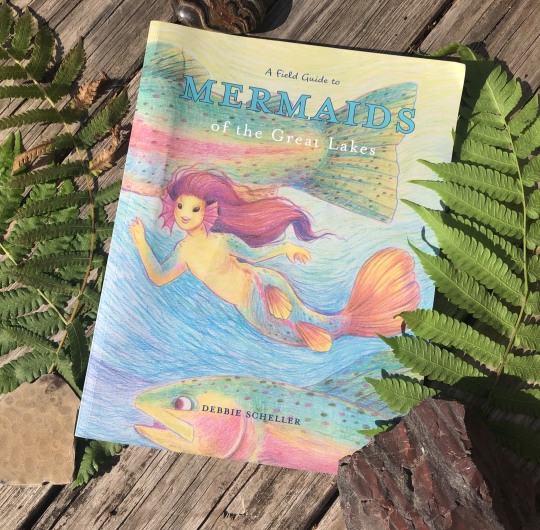
A review of a book I thought was pretty cool.
A FIELD GUIDE TO MERMAIDS OF THE GREAT LAKES
by DEBBIE SCHELLER
The Great Lakes of North America are some of the largest freshwater bodies on Earth. Though they formed relatively recently from meltwater during the last Ice Age, these inland seas have had a profound effect on the surrounding environment. While the deepest, coldest waters are devoid of life, the shallows and shoreline ecosystems are home to a great diversity of organisms such as eels, salmon, otters- and perhaps more fantastic creatures too, such as the aquatic humanoids that Debbie Scheller details in her book
Despite the “Field Guide” in the title, this is not a rigorous identification guide with taxonomic names and data keys. Rather, it more closely resembles an ecologist’s sketchbook lovingly crafted in the field. Scheller’s mermaids are depicted with a naturalist’s eye and a clear understanding and love for the ecosystems of the Great Lakes. The information about each mermaid species varies. Some entries detail unique aspects of the creatures’ anatomies. Others focus on ecological interactions and social behaviors. One entry is even a first-hand sighting of a mysterious giant mermaid that appears to be drawn to lighthouses.

The mermaids are depicted as personifications of the Great Lakes. Some are based on animals like lake chub and river otters. Others are inspired by semi- and fully aquatic flora such as milfoil, cattails, pitcher plants, and even wild ginseng. Still others are unique species adapted to the rivers and ponds that make up the Great Lakes’ watershed, such as mermaids with tails that mimic fallen leaves, or with fleshy collars that resemble pink flowers floating on the water’s surface.
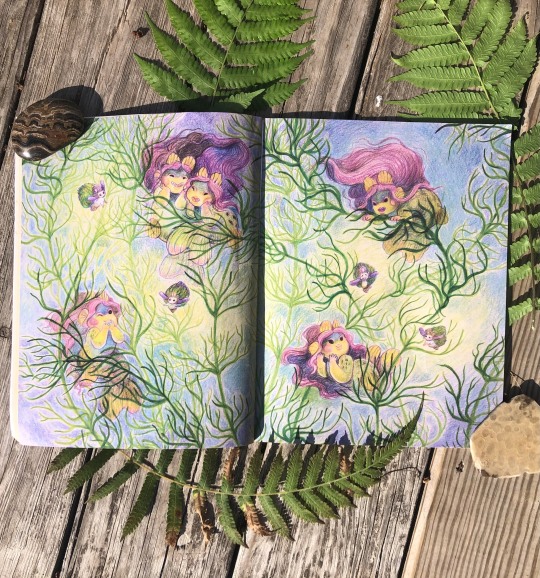
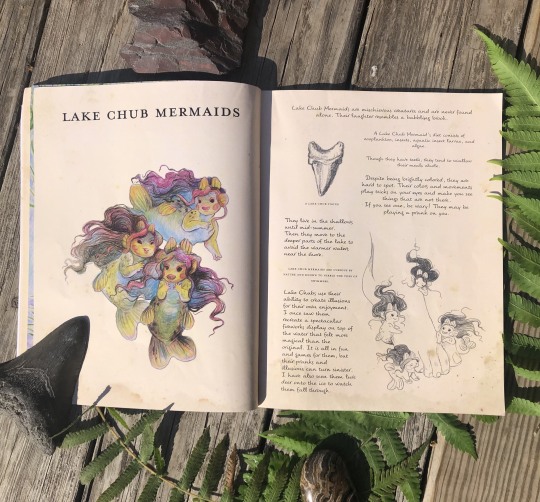
The book’s colored pencil drawings are bright and vibrant and frequently supplemented with black-and-white spot illustrations that detail aspects of behavior and ecology. Styles vary, too. Some drawings have rich, detailed colors and dark outlines. Others are lighter and airy, almost like faded preliminary sketches in an old drawing book that has sat in a museum’s archives for years. Both styles add to the feeling that this is a notebook constructed with a passion for the Great Lakes and its creatures.
This book will appeal to those who enjoy bestiary-style guides such as “Arthur Spiderwick’s Field Guide to the Fantastic World Around You” or the goblin- and fairy-themed books of Brian Froud. It will be especially interesting to readers who live near the Great Lakes, and the mermaids’ will hopefully enkindle a deeper interest in these unique environments.
You can get a copy on Bookshop.org: https://bookshop.org/books/a-field-guide-to-mermaids-of-the-great-lakes/9780999188507
Or on Amazon: https://www.amazon.com/Field-Guide-Mermaids-Great-Lakes/dp/0999188518
Learn more about the author at her website: https://www.debbiescheller.com/
Also, this review originally appeared in Astrovitae magazine, a sweet free online magazine of speculative biology that you should definitely check out:
28 notes
·
View notes
Text
"After sex I like to water the houseplants and feel the heat of their little blossom breaths on my skin after a pleasantly fruitless mating. Then the geese start up. I go to the kitchen window and there they are: going. Nina comes out looking like she’s about to cry, and I tell her we’ll be fine without them, urge her to toast their last migration with me. But she goes back to the bedroom and shuts the door. The last goose passes over our patchwork of scorched fields, our dried-up lakes, our barren greenhouses. If geese can’t hack it here, good riddance. Good riddance to the delicate snowberry, to black-footed ferrets, to salamanders that can’t deal with rising water. I want nothing incapable of change. I want cowbirds and milfoil. I want kudzu and knapweed and snakeheads and cheatgrass and bark beetles. I want the pine false webworm—I want plants that can withstand a flood, insects that won’t apologize for taking up space, things that shouldn’t thrive but do because conditions are finally ripe."
- A Natural History of Transition, by Callum Angus
#trans rights readathon#transrightsreadathon#books#book quotes#a natural history of transition#callum angus
2 notes
·
View notes
